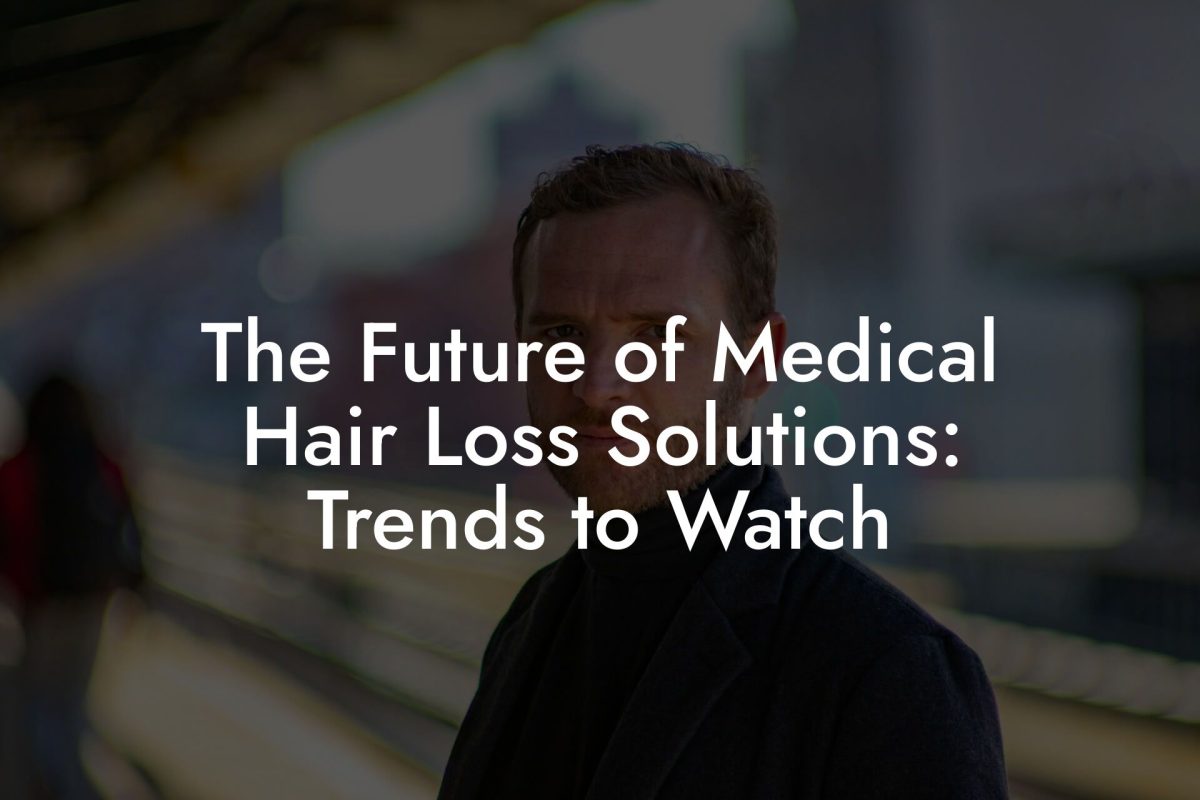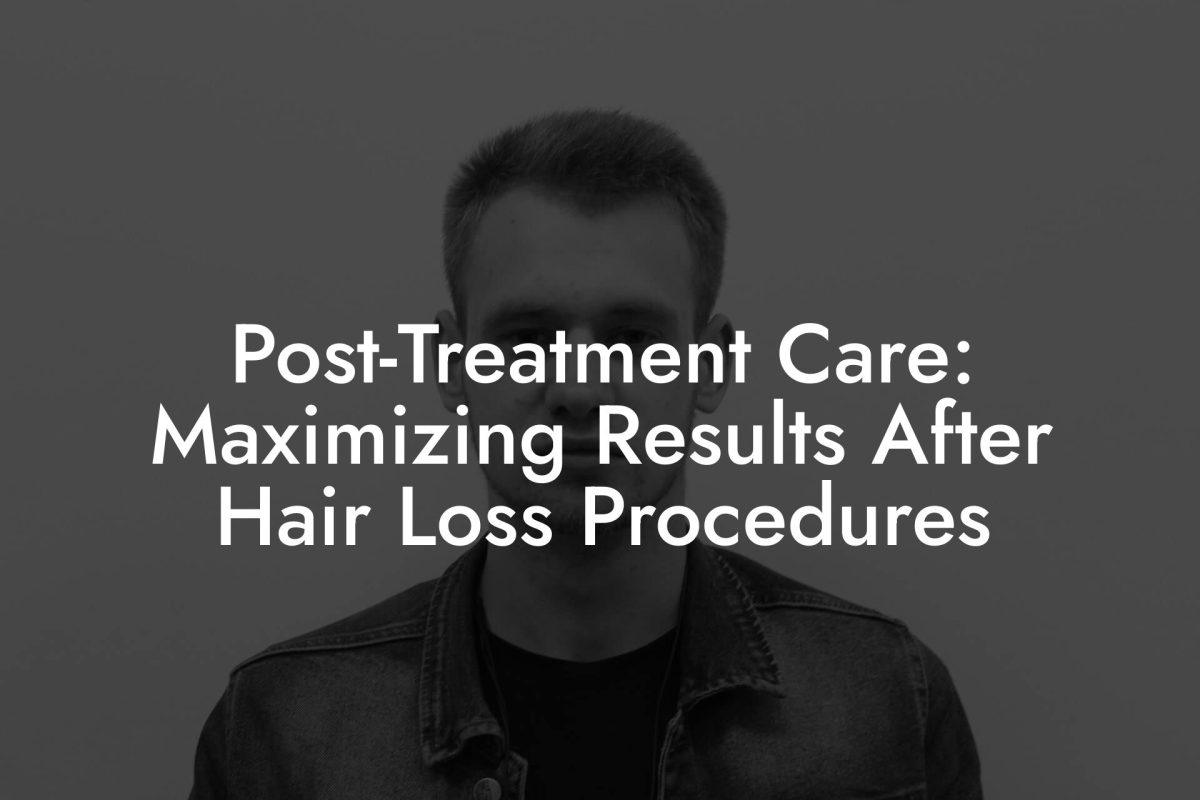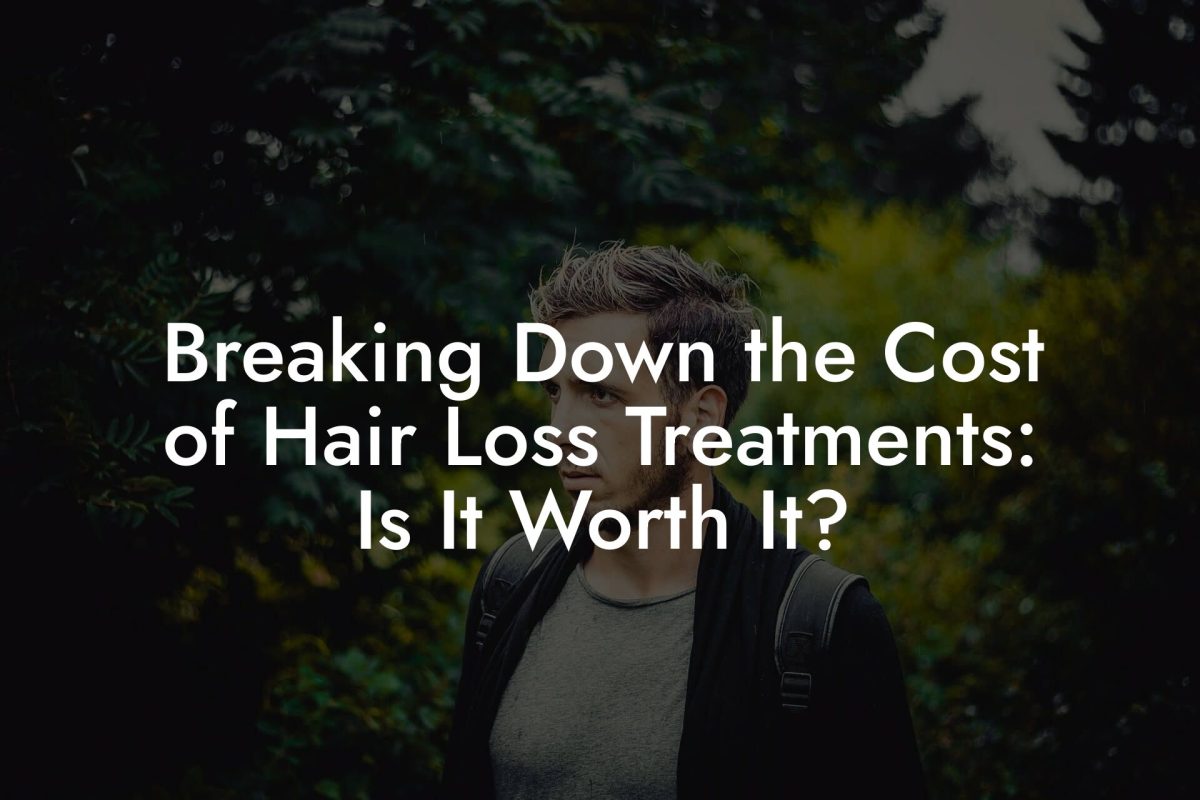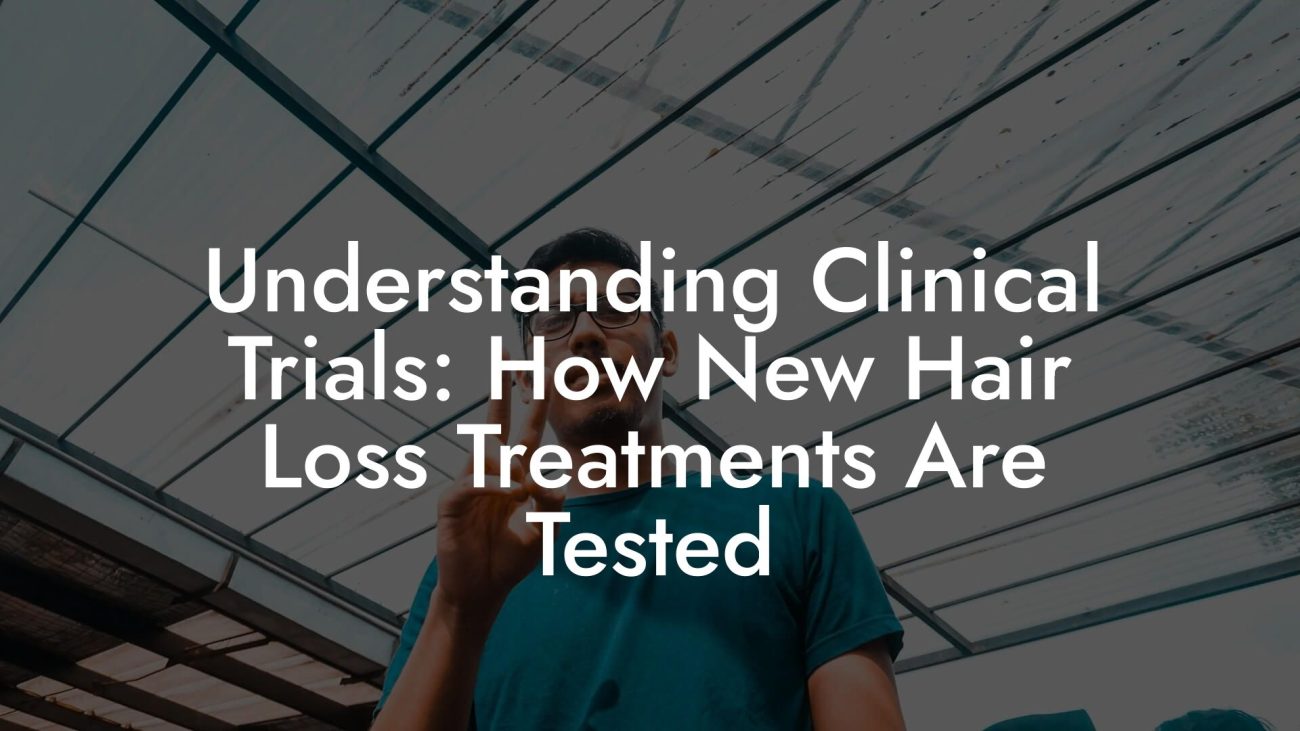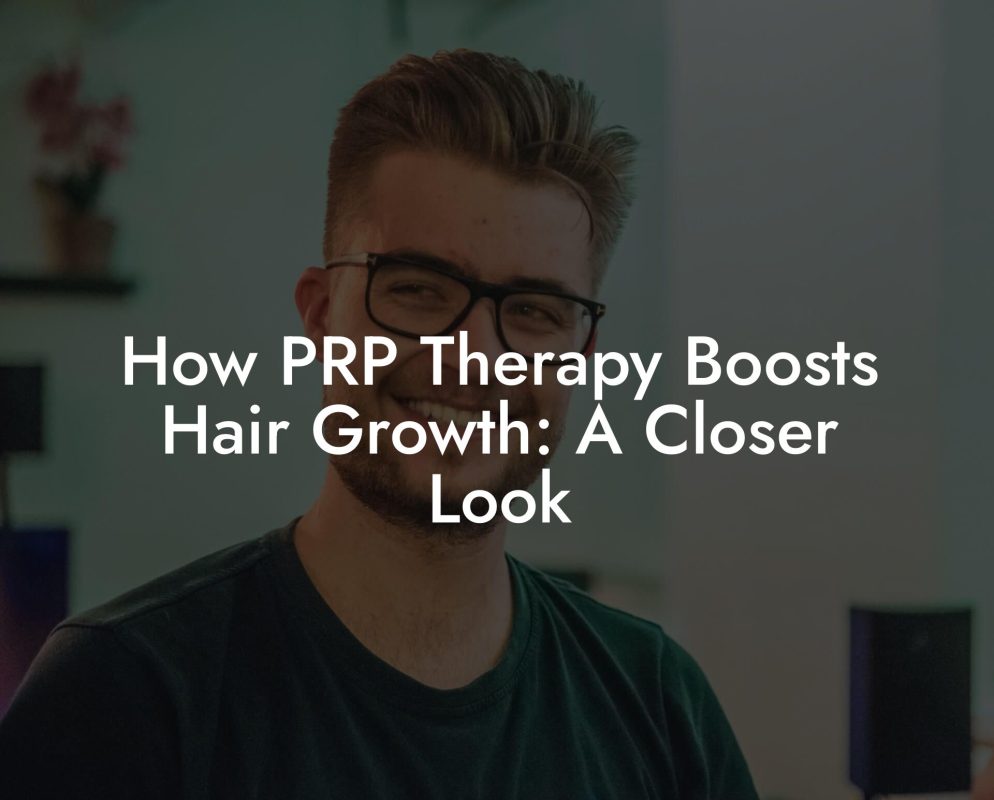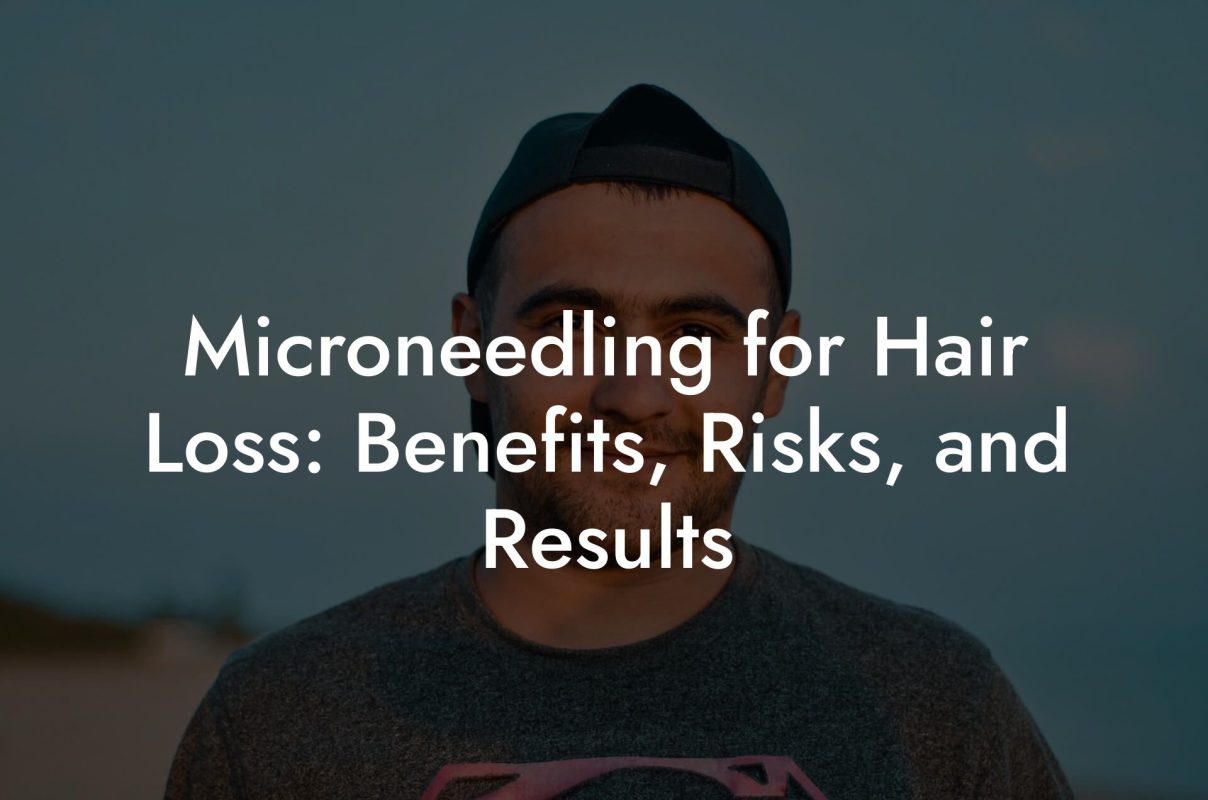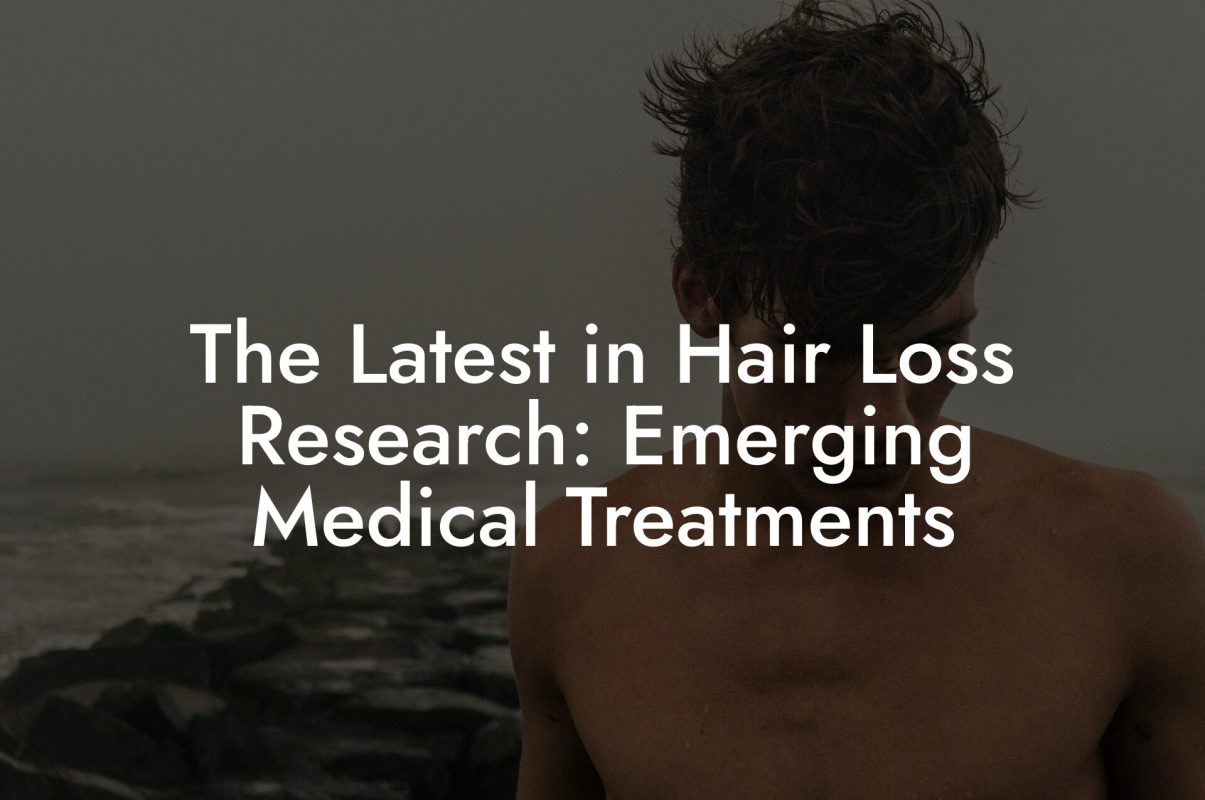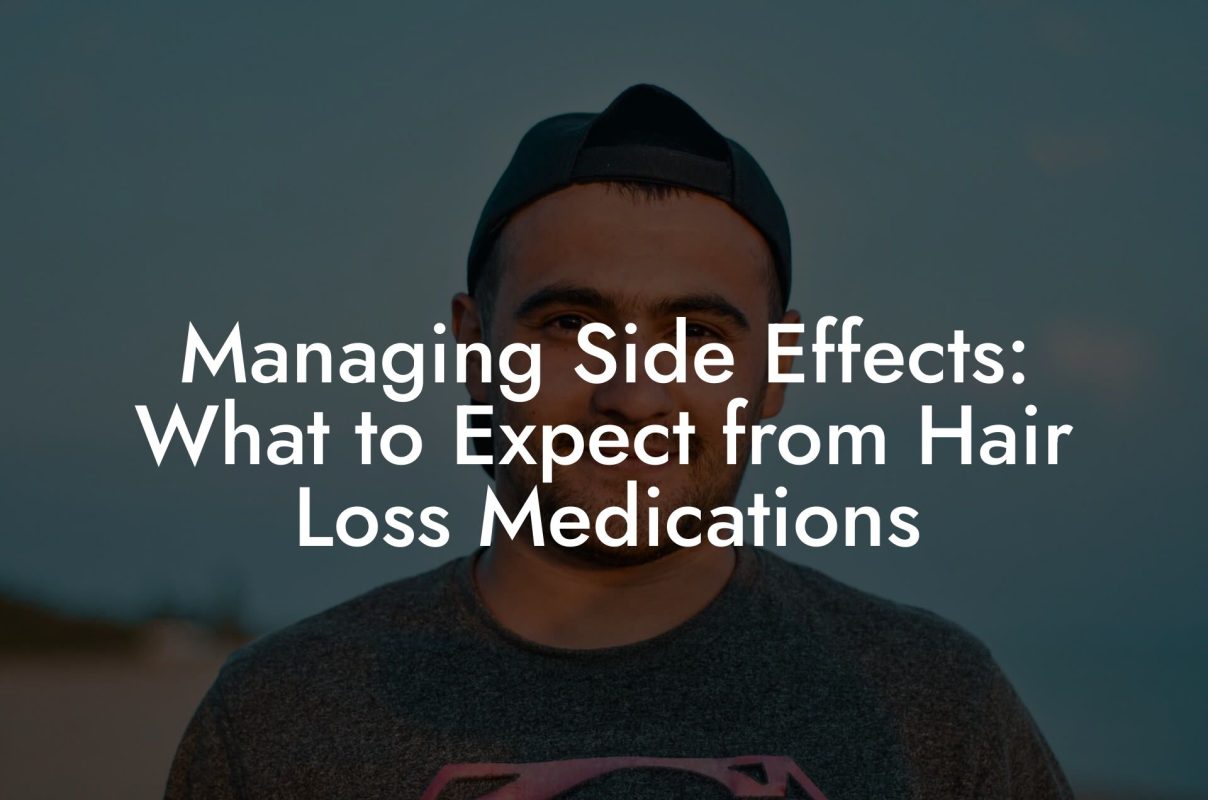Hair Loss Library
The Role of DHT in Hair Loss and How Medications Counteract It
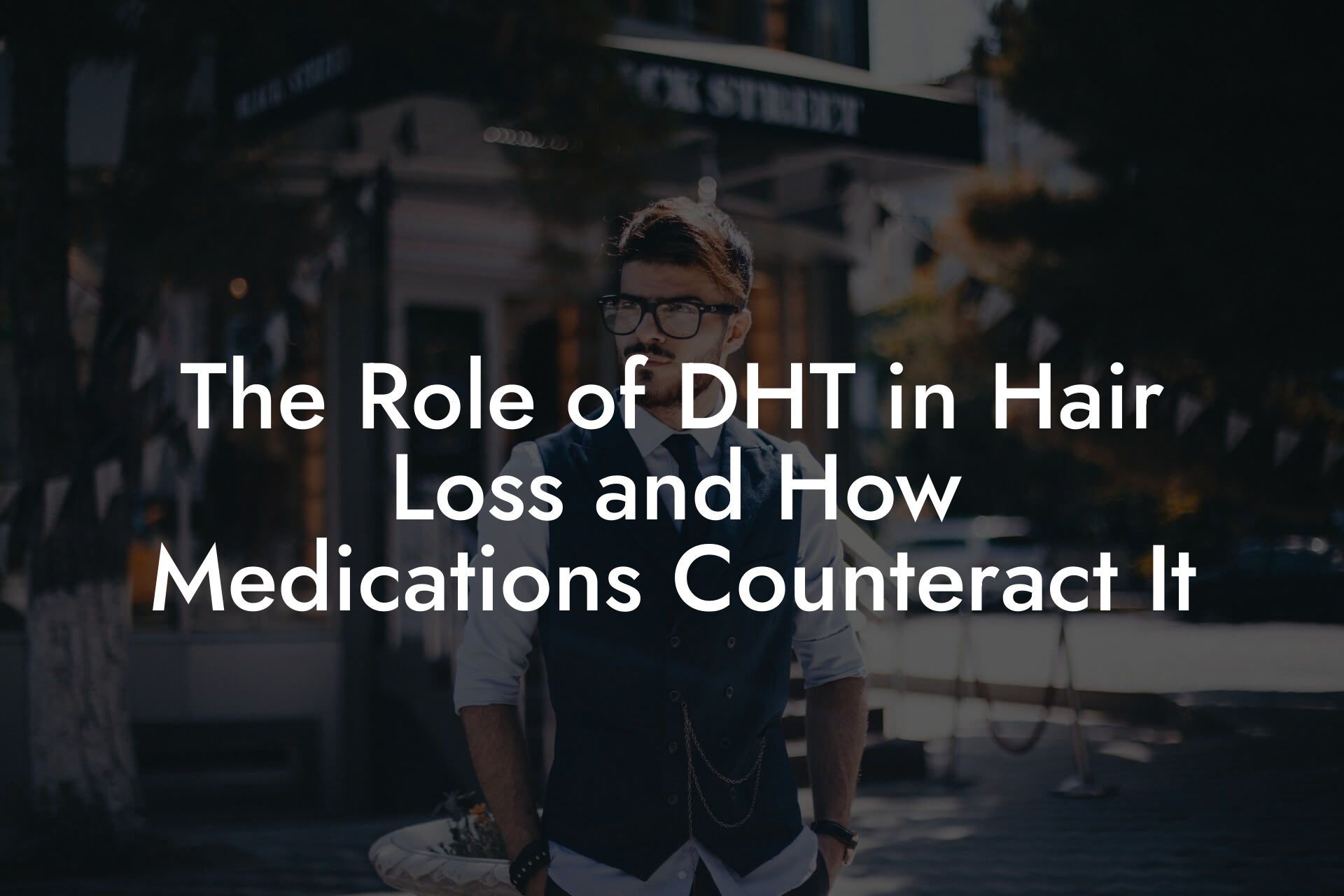
Ever wondered why your once-thick mane seems to be slipping away faster than your favorite sneaker drops? Welcome to the wild world of DHT—the notorious hormone villain responsible for turning your hair dreams into a thinning nightmare. At Mane Matrix, we’re here to break down the science behind DHT in an engaging, no-nonsense style that even your most skeptical Gen Z buddy can appreciate. Let’s dive into how this potent hormone plays its role in hair loss and check out the medications that are busy fighting back!
Demystifying DHT: The Hormonal Culprit Behind Hair Loss
DHT, or dihydrotestosterone, might sound like the name of an obscure sci-fi robot, but it’s actually a hormone with a major impact on hair growth. While testosterone gets most of the glory as the “manly” hormone, DHT is its not-so-friendly sidekick that takes a darker turn on the hair follicle.
In simple terms, DHT is a derivative of testosterone formed when the enzyme 5-alpha reductase comes into play. This conversion is totally natural, but for some men, excessive DHT wreaks havoc on hair follicles, miniaturizing them until hair becomes weak, thin, and eventually quits the party altogether.
Over time, high levels of DHT in genetically predisposed individuals lead to a condition known as androgenetic alopecia—otherwise known as male pattern baldness. The irony? While these hormones are responsible for many aspects of male development, they’re also partly to blame for that less-than-ideal hairline recession.
The Science Behind DHT and Hair Loss: It’s More Than Just a Number
Let’s geek out a bit: DHT attaches itself to receptors in hair follicles, resulting in a shortened growth cycle and gradually producing thinner strands. Imagine trying to host a party where the guests (your hair follicles) are forced to leave before the drinks kick in—suddenly, there’s just no energy to keep the fun going.
The process begins with your hair follicle entering a prolonged resting phase known as the telogen phase. When DHT inflicts its constant damage, these follicles shrink, and as their size decreases, they produce hair that is notably finer and shorter. Eventually, the follicles might stop producing hair altogether. The transformation from a full head of hair to a sparse scalp is a gradual process, influenced by genetics, age, and overall hormone levels.
It’s important to note that DHT isn’t all bad—after all, it plays a crucial role in the development of male characteristics. However, when it comes to hair health, too much DHT can be quite the troublemaker.
Medications to the Rescue: How They Keep DHT in Check
So, you might be asking, “Can we kick DHT out of our follicles like an unwelcome party crasher?” The good news is that modern medications have developed clever tactics to combat the effects of DHT on hair loss. Let’s break down the heavy hitters in the pharmaceutical world that are making waves in the fight against male pattern baldness.
Finasteride: The DHT-Busting Champion
Finasteride works by inhibiting the 5-alpha reductase enzyme, which is responsible for converting testosterone into DHT. The result? Lower levels of DHT in the scalp, allowing hair follicles to regain strength and prolong their growth phases.
Clinical studies have shown that men using Finasteride experience not only slowed hair loss but, in many cases, noticeable hair regrowth. Of course, your mileage may vary, and potential side effects—like a dip in libido or other hormone-related changes—should be discussed with your healthcare provider before embarking on this treatment.
Minoxidil: Boosting Follicle Performance
Unlike Finasteride, Minoxidil doesn’t directly block DHT. Instead, it works its magic by stimulating blood flow to the hair follicles, which in turn creates a more favorable environment for hair growth. Think of it as giving your follicles VIP access to the nutrients they crave to thrive.
Applied topically, Minoxidil is often used as an over-the-counter solution. It can take several months to show visible results, but many users report thicker, healthier hair with persistent use. The cool part? Minoxidil can be used in conjunction with Finasteride for those who need a power-packed treatment plan.
Dutasteride: A Next-Generation Contender
If you’ve ever wished for a superhero sequel in the world of hair loss treatment, Dutasteride might be it. Similar to Finasteride, Dutasteride blocks the conversion of testosterone to DHT. However, it’s often described as being more potent due to its broader inhibition of the 5-alpha reductase enzyme.
While Dutasteride has shown promising results, its use may come with increased risks of side effects. Therefore, it’s typically reserved for those who do not respond to Finasteride or require a stronger intervention.
Understanding the Impact: Beyond Hair – The Psychological Toll of Hair Loss
Hair loss isn’t just about the aesthetics—it can seriously mess with your confidence. In today's world where appearance and social media presence hold considerable sway, losing your hair can feel like a personal setback. The psychological impact can be profound, leading to stress, anxiety, and a strained self-image.
Many men report feeling self-conscious about their receding hairlines, often comparing themselves to images of youthful perfection prevalent on Instagram and TikTok. The good news? Addressing hair loss by tackling DHT not only helps restore your hair but can also rejuvenate your self-esteem. Embracing solutions such as Finasteride, Minoxidil, or even seeking professional advice provides a proactive way to regain control.
Remember, hair does not define your worth. At Mane Matrix, we understand the struggle and support every man’s journey to feeling like the best version of himself—whether you’re rocking a full head of hair or a stylish buzz cut.
The Role of Genetics and Lifestyle in DHT-Induced Hair Loss
If you’ve ever looked at your family tree, you might notice a streak of similar hair loss patterns. And yes, genetics play a huge role in determining how much DHT will affect your scalp. If your dad or granddad sported a receding hairline, chances are you might face similar challenges.
But genetics isn’t the whole story. Lifestyle factors, such as diet, stress management, and even sleep quality, can exacerbate hair loss. For instance, diets lacking in essential nutrients can weaken hair follicles, making them more susceptible to the damaging effects of DHT.
On top of that, chronic stress can lead to hormonal imbalances that may increase DHT production, creating a vicious cycle. The good news is that adopting a well-rounded lifestyle—rich in vitamins, minerals, and stress-relief practices—can give your hair follicles the support they need to fight back.
Integrating a balanced diet, regular exercise, and mindful practices with your prescribed medications puts you in a strong position to delay, and sometimes even reverse, the effects of DHT on your hair loss.
Combining Treatments: The Power of a Multi-Modal Approach
When it comes to battling DHT-induced hair loss, one treatment rarely fits the bill. The secret sauce is often found in a multi-modal approach that combines various therapies to target hair loss from multiple angles.
For example, many men find that using Finasteride alongside a daily topical Minoxidil application creates a synergistic effect, maximizing hair preservation and growth. In this dynamic duo, Finasteride keeps DHT levels in check while Minoxidil works diligently to nourish your follicles.
Moreover, incorporating lifestyle changes such as a nutrient-rich diet, regular physical activity, stress management techniques, and proper hair care routines can further enhance the effectiveness of these medications. This comprehensive approach not only addresses the hormonal cause but also supports overall hair health.
It’s like assembling a well-rehearsed sports team—each player (or treatment) has their unique skills, and together, they combat the formidable foe that is hair loss.
Exploring Natural and Alternative Approaches to Complement Medical Treatments
While pharmaceutical solutions like Finasteride and Minoxidil are rock stars in the battle against hair loss, some men are curious about incorporating natural and alternative approaches into their regimen. These methods might not directly block DHT, but they can enhance overall scalp health and potentially slow down the hair loss process.
Herbal Supplements and Nutraceuticals
Natural supplements such as saw palmetto, pumpkin seed oil, and green tea extract have gained popularity in the hair loss community. Saw palmetto, in particular, is believed to inhibit the 5-alpha reductase enzyme in a natural way, potentially reducing DHT formation. While research is still ongoing, many users swear by these alternatives as a gentle complement to conventional medications.
Scalp Massage and Essential Oils
Ever given your scalp a little self-love? Regular scalp massages can stimulate blood circulation and create a healthier environment for hair growth. Essential oils like rosemary, peppermint, and lavender aren’t just there to make you smell good—they’re known to promote hair follicle stimulation and combat inflammation.
Incorporating these natural remedies into your routine may not replace traditional treatments, but they can serve as effective sidekicks in your hair regrowth journey.
Mindfulness and Stress Reduction Techniques
Stress is a well-known trigger for hair loss, and practicing mindfulness can be a game changer. Meditation, deep breathing exercises, and even yoga can help lower stress levels, potentially reducing the hormonal surges (hello, DHT) that accelerate hair loss. By creating a calm and balanced internal environment, you support the overall well-being of your hair follicles.
If you find yourself grumbling about hair loss while scrolling through your feed, taking a moment to practice mindfulness might just be the reset button you need.
Real-Life Transformations: Case Studies in Hair Loss Recovery
Sometimes the best way to understand an issue is to see how others have turned their struggles into success stories. Here are a few case studies of men who, with the help of medical treatments and lifestyle changes, successfully counteracted DHT-induced hair loss.
Case Study 1: The Return of the Confidence
Meet Mark, a 32-year-old tech professional who felt that his receding hairline was holding him back both personally and professionally. After a thorough consultation at Mane Matrix, Mark decided to combine Finasteride with a daily Minoxidil regimen. Within several months, not only did his hair loss slow down, but he also noticed new hair growth in those previously thinning areas. With his renewed confidence, Mark was able to reclaim his sense of self—proving that a proactive treatment plan can really turn the tables.
Case Study 2: Beyond the Pharmacy Aisle
Alex, a creative type with an inherent flair for defying norms, was reluctant to turn to medications at first. After extensive research and a few heart-to-heart chats with fellow hair loss warriors online, he decided to try a combination of natural supplements (including saw palmetto), essential oil scalp massages, and a healthy diet. Though the changes were gradual, Alex eventually noticed that his hair was not falling out as relentlessly. His experience highlights that while medical solutions are powerful, a holistic approach that includes natural remedies can also make a significant impact.
Case Study 3: The Science Geek’s Approach to Prevention
Then there’s Sam, an engineering graduate who loves data and precision. Sam chose to monitor his hormone levels and hair health meticulously. Combining Dutasteride with lifestyle modifications such as a balanced diet, mindfulness, and regular exercise, he managed to keep his hair loss at bay. His journey reinforces the idea that knowledge paired with a consistent regimen is a potent formula for success.
These real-life transformations serve as powerful reminders that while DHT might be a formidable foe, strategic, informed choices can lead to impressive results. Whether you favor a pharmaceutical fix, natural remedies, or a blend of both, there’s hope—and plenty of strategies—to revive your hair and your self-assurance.
Crafting Your Personalized Hair Loss Recovery Plan
There’s no one-size-fits-all solution when it comes to hair loss recovery. Much like tailoring your favorite pair of jeans, your approach should be custom-fit to your unique history, genetics, and lifestyle. Here are some steps to help you design a treatment plan that tackles DHT while boosting overall hair health:
Step 1: Do a Comprehensive Check-Up
Begin with a thorough consultation and diagnostic tests. Understanding your hormonal profile, genetic predisposition, and overall health is essential. Many men prefer a low-key, embarrassment-free consultation at Mane Matrix, where the focus is on expert analysis without the usual clinical awkwardness.
Step 2: Set Achievable and Realistic Goals
Whether your goal is to slow down further hair loss or to stimulate regrowth, clarity is key. Set short- and long-term targets that are realistic—you know, like noticing a little extra volume or filling in that receding hairline over time.
Step 3: Explore Treatment Options
Talk to your hair health specialist about the available options. This might include medications like Finasteride or Dutasteride, topical solutions like Minoxidil, as well as natural supplements and lifestyle changes. A multi-modal approach is often the most effective way to counter the impact of DHT.
Step 4: Integrate Lifestyle Improvements
Don’t overlook the simple things—good nutrition, stress management, and proper hair care are all cornerstones of a successful treatment plan. Small changes, like boosting your protein intake or incorporating stress-relief practices, can supercharge the effects of your medications.
Step 5: Monitor, Adjust, and Celebrate Progress
Keep track of your hair’s progress with before-and-after photos, journaling, or even dedicated apps. Regularly review your treatment plan with your healthcare provider and make adjustments as needed. Remember, every small win is a victory—even if it’s just noticing a little more density when you catch yourself in the mirror.
Crafting a personalized plan means owning your hair journey. With the right mix of science, lifestyle tweaks, and persistence, you can build a strategy that not only counters DHT but also celebrates your individuality.
Resources and Community Support: Your Next Steps
The journey to reclaiming your hair and confidence isn’t one you need to walk alone. At Mane Matrix, we’re more than just a resource—we’re a community. Here are some resources and support systems to help guide you through every step of the process:
- Online Forums and Social Groups: Join communities on platforms like Reddit, Facebook, or dedicated hair loss forums to share experiences and tips with others facing the same challenges.
- Expert Consultation Services: Take advantage of Mane Matrix’s expert analysis and personalized recommendations without the awkwardness and high cost of traditional consultations.
- Educational Content: From blog posts to e-books, there’s a wealth of information available on the latest research, treatment options, and lifestyle tips for managing hair loss.
- Product Reviews: Leverage honest, user-generated reviews and testimonials to help you choose the most effective products and treatments.
- Support Groups and Webinars: Attend virtual meetups and webinars hosted by health professionals, where you can learn more about new advances in hair loss recovery and get your questions answered in real-time.
Embrace the power of community—sometimes, hearing someone else’s success story is the best motivation to stick with your treatment plan and trust the process.
Integrating Science, Humor, and Real Talk on Your Hair Regrowth Journey
Let’s be honest—hair loss can be a sensitive topic, and sometimes the only way to cope is to laugh in the face of DHT. Injecting humor into your journey not only keeps your spirits high but can also help destigmatize a subject that affects millions of men.
By understanding the science behind DHT and exploring an array of solutions from potent medications to lifestyle tweaks and natural remedies, you become an active participant in your narrative. Instead of feeling like the victim of a hormonal coup, you’re now the strategist plotting a well-rounded assault on hair loss.
Remember, your hair journey is uniquely yours. Whether it involves meticulous documentation of changes, sharing your ups and downs in an online community, or simply rocking a confident look no matter what the mirror shows, the keys to success are knowledge, perseverance, and a dash of humor.
FAQs: Your DHT and Hair Loss Questions Answered
We know you might have plenty of burning questions about DHT, hair loss, and how medications can help. Here’s our no-holds-barred FAQ section designed to answer the most common queries in plain language.
1. What exactly is DHT and why is it linked to hair loss?
DHT is dihydrotestosterone, a hormone derived from testosterone. It binds to hair follicle receptors, shortening the growth phase and causing the follicles to shrink over time. In men predisposed to androgenetic alopecia, this can lead to noticeable hair loss.
2. How do medications like Finasteride work?
Finasteride tackles hair loss by inhibiting the enzyme 5-alpha reductase, which converts testosterone into DHT. With lower DHT levels in the scalp, hair follicles are less likely to shrink, helping slow down hair loss and promote regrowth.
3. Does Minoxidil directly block DHT?
No, Minoxidil doesn’t block DHT. Instead, it improves blood flow to the hair follicles, creating a healthier environment that can support hair regrowth even in the presence of DHT.
4. Can genetic factors influence how severely DHT affects my hair?
Absolutely. Your genetic makeup plays a major role in determining how your hair follicles respond to DHT. If you have a family history of male pattern baldness, you might experience more pronounced effects.
5. Are there natural ways to reduce the impact of DHT?
Yes, some natural supplements like saw palmetto and pumpkin seed oil may help inhibit the conversion of testosterone to DHT. Additionally, a balanced diet, stress management, and regular scalp care can contribute to overall hair health.
6. How long does it take to see results from these treatments?
Patience is key—visible results typically take several months. Consistency in using your prescribed medications and following your treatment regimen is essential to seeing improvements over time.
7. Can I use multiple treatments at once?
Often, a multi-modal approach can yield the best results. Many men simultaneously use medications like Finasteride and topical treatments like Minoxidil while incorporating lifestyle changes.
8. What side effects should I be aware of?
Medications like Finasteride and Dutasteride can have side effects, such as changes in libido or mood. It’s important to discuss potential risks and benefits with your healthcare provider before starting any treatment.
9. Is there anything I can do to prevent hair loss from starting?
Early intervention is often key. Maintaining a healthy lifestyle, reducing stress, and seeking expert advice at the first sign of hair thinning can help delay or minimize hair loss.
10. How do I know which treatment plan is right for me?
A comprehensive assessment by a hair loss specialist—like those at Mane Matrix—will help determine your unique needs and recommend a personalized approach that might include medications, natural supplements, and lifestyle adjustments.
Embracing the Future: Your Roadmap Against DHT-Induced Hair Loss
Facing hair loss with a proactive mindset can transform a potentially disheartening experience into an empowering journey. By understanding DHT, leveraging the benefits of modern medications, and complementing them with holistic strategies, you’re not just fighting hair loss—you’re taking control of your narrative.
Whether you’re starting treatment early, mixing medical science with natural remedies, or simply looking for effective ways to boost scalp health, remember that every step you take is progress. Each treatment session, every dietary tweak, and even the daily act of feeling good about yourself contributes to a brighter, fuller future.
At Mane Matrix, we celebrate the forward-thinking approach to hair care, where humor, honesty, and science converge to empower you against the odds. Your journey to a healthier scalp and restored confidence starts with a single step—armed with knowledge, supported by community, and driven by determination.
So, here’s to defying the odds, reclaiming your mane, and showing the world that hair loss is just another challenge that you can beat with style, savvy, and a smile.
If you loved this article... Dive deeper into the world of mens hair loss with our most popular sections. If there is anything you think is missing or anything you would love for us to write about, just give us a shout.
Prescription Solutions: The Best Medications for Men’s Hair Loss
Minoxidil & Beyond: Exploring Topical Treatments for Hair Regrowth
How Finasteride Works: The Science Behind This Hair Loss Blocker
Platelet-Rich Plasma (PRP) Therapy: Is It the Answer to Hair Loss?
Hair Transplant 101: A Beginner’s Guide for Men
Exploring Laser Therapy: Non-Invasive Options for Hair Regrowth
The Pros and Cons of Oral Hair Loss Medications
New Frontiers in Hair Loss Treatment: Stem Cell Therapy Explained
Surgical vs. Non-Surgical: Which Hair Loss Treatment Is Right for You?
Understanding Combination Therapy for More Effective Hair Regrowth
How to Choose the Right Hair Loss Clinic: Expert Tips
Exploring Off-Label Treatments: What’s Worth Trying for Hair Loss?
Managing Side Effects: What to Expect from Hair Loss Medications
The Latest in Hair Loss Research: Emerging Medical Treatments
Microneedling for Hair Loss: Benefits, Risks, and Results
How PRP Therapy Boosts Hair Growth: A Closer Look
The Role of DHT in Hair Loss and How Medications Counteract It
Customized Treatment Plans: Tailoring Hair Loss Solutions for You
Understanding Clinical Trials: How New Hair Loss Treatments Are Tested
Breaking Down the Cost of Hair Loss Treatments: Is It Worth It?
How to Prepare for a Hair Transplant: A Step-by-Step Guide
Post-Treatment Care: Maximizing Results After Hair Loss Procedures
A Doctor’s Perspective: When to Consider Medical Hair Loss Treatments
Success Stories: Real Men Share Their Hair Restoration Journeys
The Future of Medical Hair Loss Solutions: Trends to Watch





